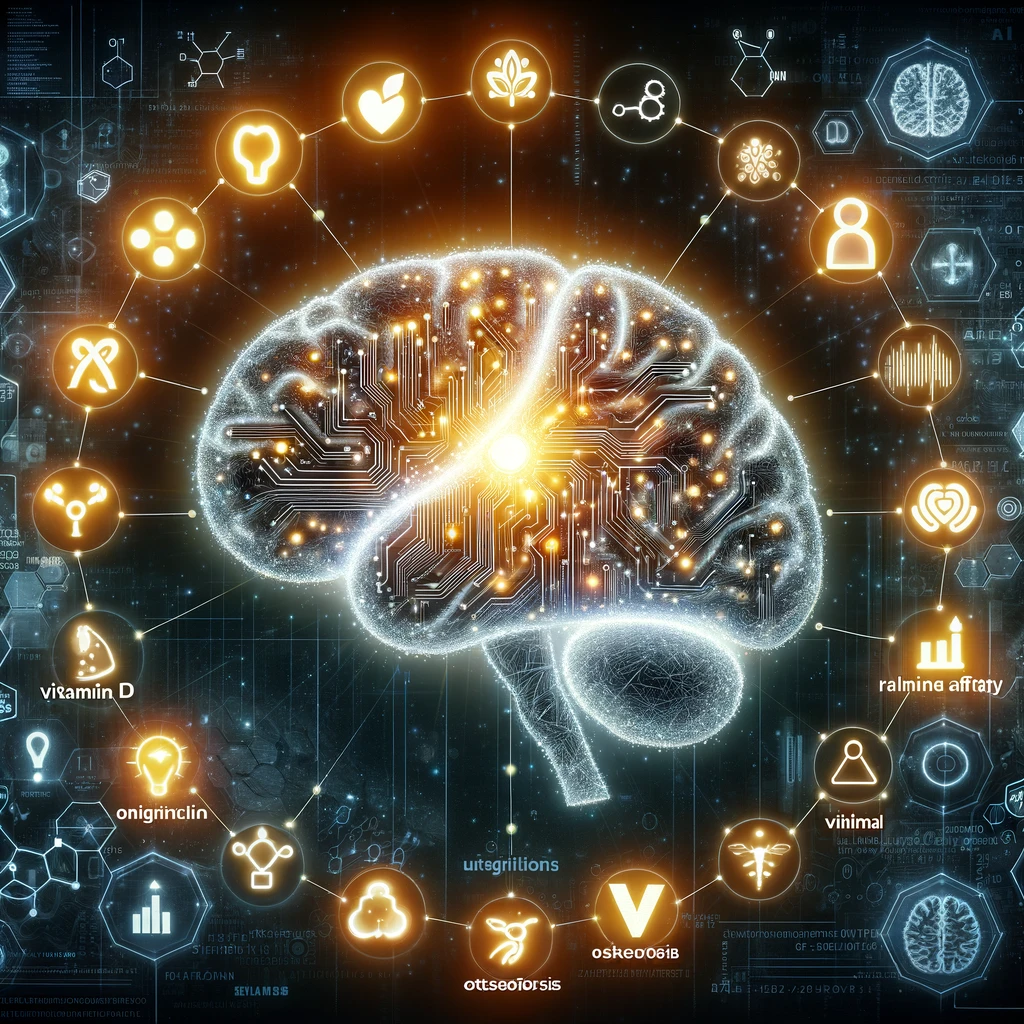AI Uncovers Surprising New Alzheimer’s Risk Factors – Is Vitamin D Deficiency a Red Flag?

Artificial Intelligence reveals unexpected Alzheimer's risk factors, including vitamin D deficiency and osteoporosis, in a groundbreaking study.
- What unexpected risk factors for Alzheimer’s disease did the AI analysis uncover?
- How did the researchers use artificial intelligence and machine learning in their study?
- What are the potential therapeutic implications of these new AI-discovered risk factors?
For decades, researchers have been exploring the key risk factors that contribute to the development of Alzheimer’s disease, one of the cruelest and most devastating neurological conditions affecting millions worldwide. From genetic predispositions to lifestyle choices like physical activity levels and educational attainment, brain experts have managed to identify several major pieces of the complex Alzheimer’s puzzle.
However, one tantalizing promise of artificial intelligence in the field of medicine is its potential to unveil obscure connections and risk factors that have so far evaded human detection. In a groundbreaking new study covered by Time magazine and published in the journal Nature Aging, researchers from the University of California San Francisco (UCSF) have leveraged the power of machine learning to uncover a set of novel risk factors linked to Alzheimer’s disease diagnosis. By analyzing this innovative approach and its significant findings, we gain valuable insights into the future of Alzheimer’s research and treatment.
The Innovative AI Approach
Led by Marina Sirota and her team at UCSF, the researchers harnessed an AI algorithm and set it loose on a vast database of anonymous electronic health records from patients, spanning clinical data like lab results, imaging scans, and documented medical conditions. The machine learning program was tasked with identifying any common characteristics shared by individuals who eventually received an Alzheimer’s diagnosis over seven years.
“There were some things we saw that were expected, given the knowledge that we have about Alzheimer’s, but some of things we found were novel and interesting” Sirota told Time, hinting at the groundbreaking potential of their AI-driven approach.
Unsurprising (And Surprising) Risk Factors
As one might expect, the AI flagged well-established Alzheimer’s risk factors like heart disease, high cholesterol levels, and inflammatory conditions – all known culprits in the buildup of toxic protein plaques in the brain. However, the real surprises came in the form of seemingly unrelated conditions that emerged as potential red flags.
Among the most unexpected findings were the elevated Alzheimer’s risk associated with osteoporosis in women and depression in both sexes. But perhaps the most intriguing revelation was the link between lower levels of vitamin D and an increased likelihood of an Alzheimer’s diagnosis lurking on the horizon.
“Picking up these factors gives us clues that a diagnosis of Alzheimer’s might be coming, and things like high cholesterol and osteoporosis are modifiable with treatments”, Alice Tang, the lead author, and a medical student in bioengineering, told Time.
A Potential Path to Prevention?
While the study did not directly explore whether treating these newly identified risk factors could effectively lower an individual’s risk of developing Alzheimer’s, the implications are profound. As Sirota explained to Time, “We can retrospectively look at treatment data in the electronic medical records, so that’s definitely a direction forward to determine if we can leverage any existing therapies to lower risk”.
Imagine a future where a simple vitamin D supplement or cholesterol-lowering medication could potentially delay or even prevent the onset of Alzheimer’s – a disease that currently lacks any effective cure or treatment to halt its relentless progression. The prospect of repurposing existing therapies to mitigate Alzheimer’s risk is tantalizing, to say the least.
Genetic Links and Future Research Avenues
But the researchers didn’t stop at identifying novel risk factors; they also delved into the genetic underpinnings that could further elucidate the connections between conditions like high cholesterol, osteoporosis, and Alzheimer’s disease.
Tang’s genetic analysis revealed that the link between cholesterol and Alzheimer’s is tied to the well-known ApoE gene, with the ApoE4 variant being a known risk factor for the disease. Additionally, she identified a previously unknown gene associated with both osteoporosis and Alzheimer’s, potentially opening new avenues for targeted research and future treatment development.
The Power of AI in Unraveling Complex Diseases
Ultimately, this pioneering study serves as a resounding testament to the immense potential of AI and machine learning in unraveling the intricate complexities of multifaceted diseases like Alzheimer’s. By sifting through vast troves of data and detecting patterns invisible to the human eye, these cutting-edge technologies are poised to revolutionize our understanding of diseases and pave the way for novel therapeutic interventions.
As Sirota eloquently stated to Time, the study “shows the power of machine learning in helping scientists to understand better the factors driving diseases as complex as Alzheimer’s, as well as its ability to suggest potential new ways of treating them”.
A New Era of Alzheimer’s Research and Treatment
While much work remains to be done, this AI-driven discovery represents a significant stride forward in our quest to conquer Alzheimer’s disease. By uncovering unexpected risk factors like vitamin D deficiency and osteoporosis, researchers have expanded the map of potential contributing factors, opening new avenues for preventive measures and therapeutic interventions.
Moreover, the genetic links unearthed by the study offer tantalizing clues about the biological mechanisms underpinning these risk factors, paving the way for targeted drug development and personalized treatment approaches tailored to an individual’s unique genetic profile.
As we stand on the precipice of a new era in Alzheimer’s research and treatment, one thing is certain: the profound synergy between human ingenuity and artificial intelligence promises to illuminate our path forward, guiding us toward a future where this devastating disease is no longer an impossible enigma, but a challenge we can overcome through the power of science and technology.




